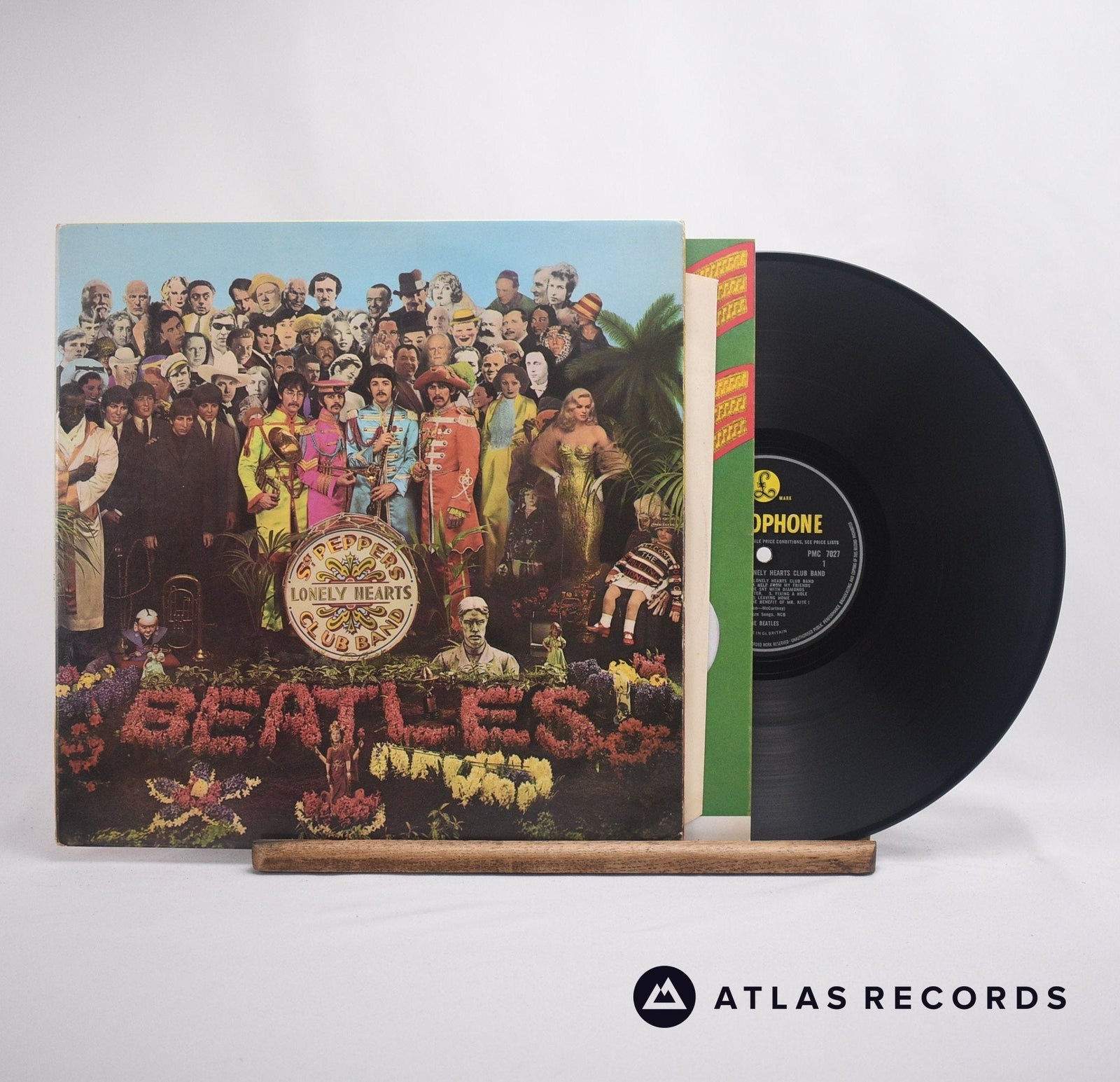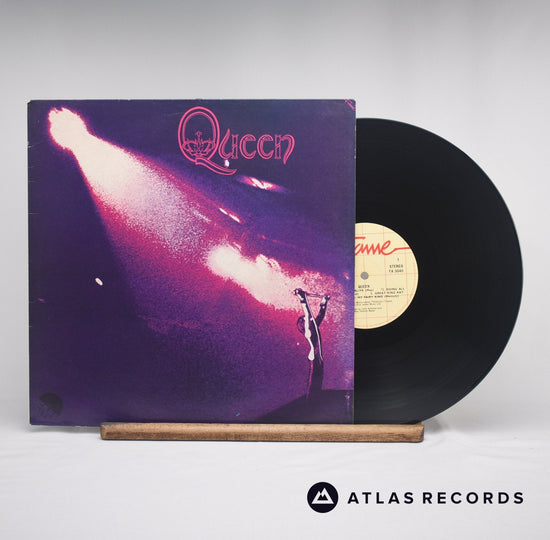First and early press The Beatles records can can be identified in a number of different ways, with features like label text colour (and placement) as well as misaligned graphics all being key identifiers. If in doubt, a yellow and black Parlophone label is always a promising sign!
We've crafted this guide to help you identify your own records, so read on to see if your own The Beatles albums are first or early presses...
1 - ‘Abbey Road', 1969

One of the key things to look out for with copies of the iconic Abbey Road album is how the green Apple logo sits in line with the rest of the text on the sleeve's rear. If the logo is misaligned with the rest of the text, you've likely got an early release on your hands.
There are one or two variations of this sleeve, however, so one other crucial detail to look out for would be whether or not the track 'Her Majesty' is omitted from the back of the sleeve. If it's not there, you'll likely have an early pressing!
2 - ‘Sgt. Pepper's Lonely Hearts Club Band', 1967
A first press of Sgt. Pepper's can be recognised by its red and white 'psychedelic' inner sleeve, a black and yellow Parlophone label and 'The Gramophone Co.' written in the radial text of the label.
The other thing to look out for on copies of SPLHCB is the sleeve printer credit found on the lower right-hand corner of the sleeve's cover. First and early presses of this album will show "Printed and made by Garrod & Lofthouse Ltd. Patents pending", whereas later pressings may not have any credit at all.

3 - ‘Revolver', 1966

Similar to Sgt. Pepper's, first and early presses of Revolver will have yellow and black printed Parlophone labels, as well as rim text that begins with the line "The Gramophone Co..."
Early presses of Revolver also included a tax code in the space between the record's spindle hole and it's pressing ring. The tax code to look out for with an early press of Revolver is "KT", however, these can sometimes be tricky to spot - so you may have to look closely!
4 - 'Beatles For Sale', 1964

Again, the yellow and black Parlophone label text is key here. The key difference to look out for with your copy of 'With The Beatles' is the inclusion of the phrase "The Parlophone Co. LTD..." printed along the outside of the label's edge.
Another thing to check is the record's stamper numbers. These are the numbers that follow the record's matrix information. In this case, we're looking for '-1' to be stamped on each side of the record's dead wax space, just after the main matrix information. If your copy has these three characteristics, you've got a first press on your hands!
5 - ‘Rubber Soul', 1965
Similar to 'Beatles For Sale', early pressings of Rubber Soul will include the stamper numbers '-1' after the main matrix information on each side of the record's dead wax. Pressings with these identifiers were known as 'Loud Cut' pressings, and were quickly re-cut due to the apparent harshness of the vocals.
There are two main label variations of Rubber Soul early pressings, one which uses Sans-serif text, and another which uses the Times New Roman font. The Sans-serif variant is largely evident on '-1' first presses, with the Times New Roman fonts often found on slightly later (but still early) '-4' pressings.
6 - ‘With The Beatles', 1963
First and early presses of 'With the Beatles' can be a little bit trickier to identify when compared to other releases, as one identifier alone won't tell you exactly what you have.
For starters, early presses of With the Beatles often have the matrix details '-1 -1'. As well as this, black and yellow Parlophone labels are crucial. The other thing to complete the set here is the 'KT' tax code stamp on either side of the record's label, just next to the spindle hole.
7 - ‘Please Please Me', 1963
The earliest releases of The Beatles' debut album "Please Please Me” displayed the Parlophone logo and the band's name in gold lettering - different to the yellow and black style that would be introduced from 1963.
This album's first and second presses incorporated the black and gold logo design (shown below), with each issue after the second featuring the more recognisable yellow and black style that is prominent on most other The Beatles early press releases.

8 - ‘Help!', 1965

'Help!' is actually relatively straight forward to identify when compared with some other The Beatles records. With 'Help!', the matrix details are key - many first press releases will have their matrix details ending in '-2'.
Couple this with black and yellow Parlophone labels as well as 'The Gramophone Company..." rim text and you're likely looking at a first press!
It is worth mentioning that Help! did have a few first press label variations. These variants included differences like serif and sans-serif fonts used on the record's label, as well as spacing differences between the catalogue number and date on the side one of the label.
Despite there being three or four known variants of this record's first release, if your copy has black and yellow Parlophone labels as well as matrices that end with '-2', you should be pretty safe in the knowledge that you have a first press!












3 comments
I think this is wrong, but happy to be corrected. I think Beatles for Sale first UK presses end with “3N”. I’m not sure there are any “1N” matrix numbers for this album. Guide is great though
Super helpful, thank you
Very useful article, thank you